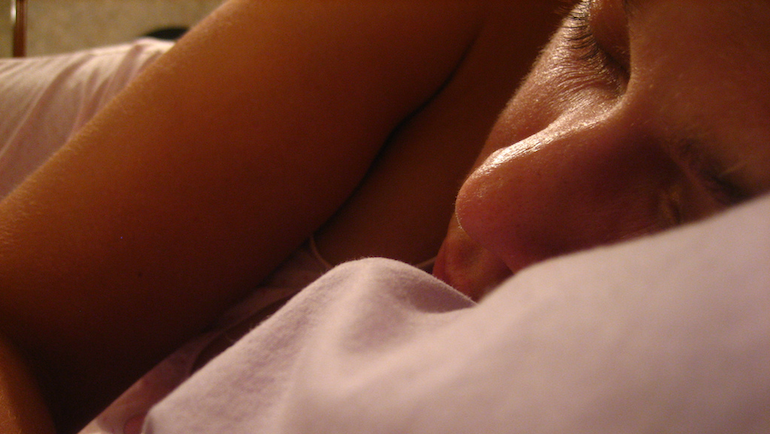
Getting the right amount of sleep can be a challenge, especially with the speed and variables of modern life. Artificial light not only allows us to stay up later, it actually tricks our mind into staying awake. The fast pace of modern living leaves little time to slow down as the day ends. And the never-ending stream of physical stimulus keeps us physically excited way above levels our ancestors experience.
There are lots of things you can try to improve the quality of your sleep and how quickly you doze off. Here are six things you can try tonight to make some improvements.
1. Limit blue light exposure in the evenings.
What was once scientifically suspect is now agreed upon — different kinds of light affect how you sleep. Artificial light, particularly blue light — the kind you get out of LEDs, fluorescents, and computer screens — can mess with your natural rhythms of sleep and wakefulness. Limiting your exposure to blue spectrum light allows your body to release melatonin, the hormone that signals sleepy-time. Don’t sweat the blue all the time, thought. Blue light during the day can increase alertness, elevate mood, and boost reaction times.
What to do? Limit exposure to computer screens, LCD devices, fluorescent lights, and yes, TV screens, after the sun goes down. If you’re really ambitious, install black-out curtains in your bedroom to limit the amount of artificial light that comes in from the outside.
2. Practice mindfulness.
First, we should explain what we mean by mindfulness. Mindfulness is the practice of focusing your awareness on the present moment — thoughts, feelings, physical sensations, and the environment around you — without adding personal thought, judgements, or evaluations of any of it. Let it come in and let it go. Why can this improve your sleep? It helps to eliminate one of the primary causes of sleeplessness — worry.
What to do? Start with simple practices like putting your attention on the rhythm of your inhalation and your exhalation, or slowly scanning your body from head to toe for tightness or tension, gently releasing it as you go.
3. Create a sleep ritual.
Do you remember when your parents told you it was time to get ready for bed? Did you know that they were actually kicking off a mental routine that starts the process of powering down your mind before you got into bed? You were starting the process of going to sleep. Our minds respond instinctively to patterns and creating patterns that let your brain know sleep is coming can set it off on the mental tasks required to switch off for the night.
What to do? Identify the things you do before going to bed and start establishing a pattern of completing them. Plan for about thirty minutes. You can start with reading a book, stretching or another relaxation exercise, dimming or turning off lights, brushing your teeth, and washing up. Over time, your body will recognize this as the pre-sleep ritual.
4. Leave your bedroom for bed-related activities.
Watching TV, using a computer or phone, or reading a book in bed may be keeping you up. If your mind associates the bed with both sleeping and wakeful activities, it won’t have a clear idea of what to do when you slide under the covers.
What to do? Leave the electronics and books in the living room and reserve your bed for sleep or other bed specific activities.
5. Kill the caffeine early.
Caffeine has a half life of five to six hours. That means it takes five to six hours for your body to get rid of half the caffeine you took in. Keep that in mind when having an afternoon cup of coffee or tea after dinner.
What to do? Try stopping caffeine intake after lunch. Save the coffee for the morning and start taking in water or other herbal, non-caffeinated beverages in the afternoon and evening.
6. Give yourself a foot massage.
Yup, everything connects to the soles of your feet. Giving your feet a five-minute rub down before bed is a great way to send relaxing signals from head to toe.
What to do? Using a small amount of oil, rub in a circular motion from ankle to toe across the top and across the bottoms of your feet. Then, using gentle pressure, drag your thumb from your shin to each toe individually. Repeat the same along the sides of your feet. Finally, lace your fingers into your toes, and move your foot up and down and side to side. Repeat on each foot.



































